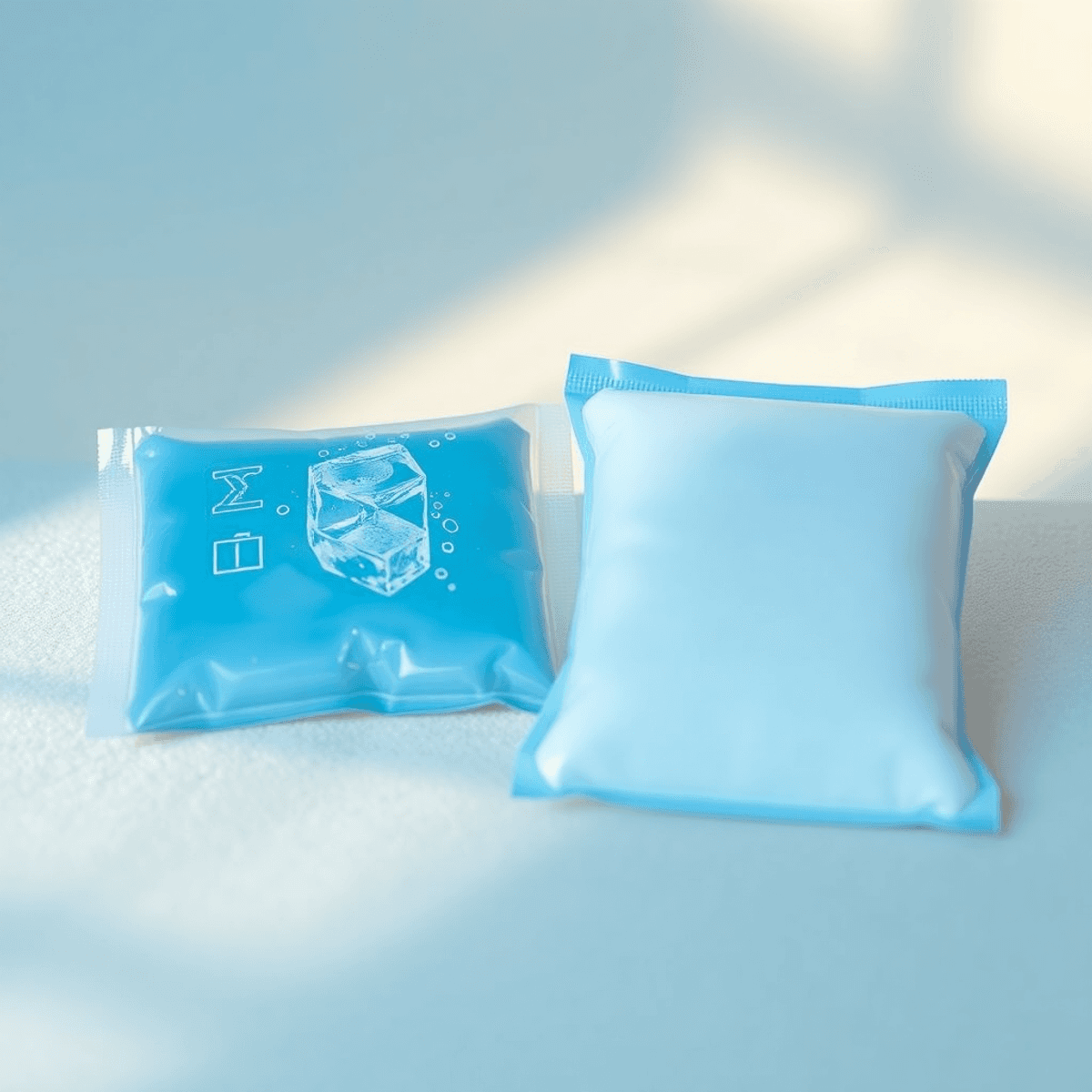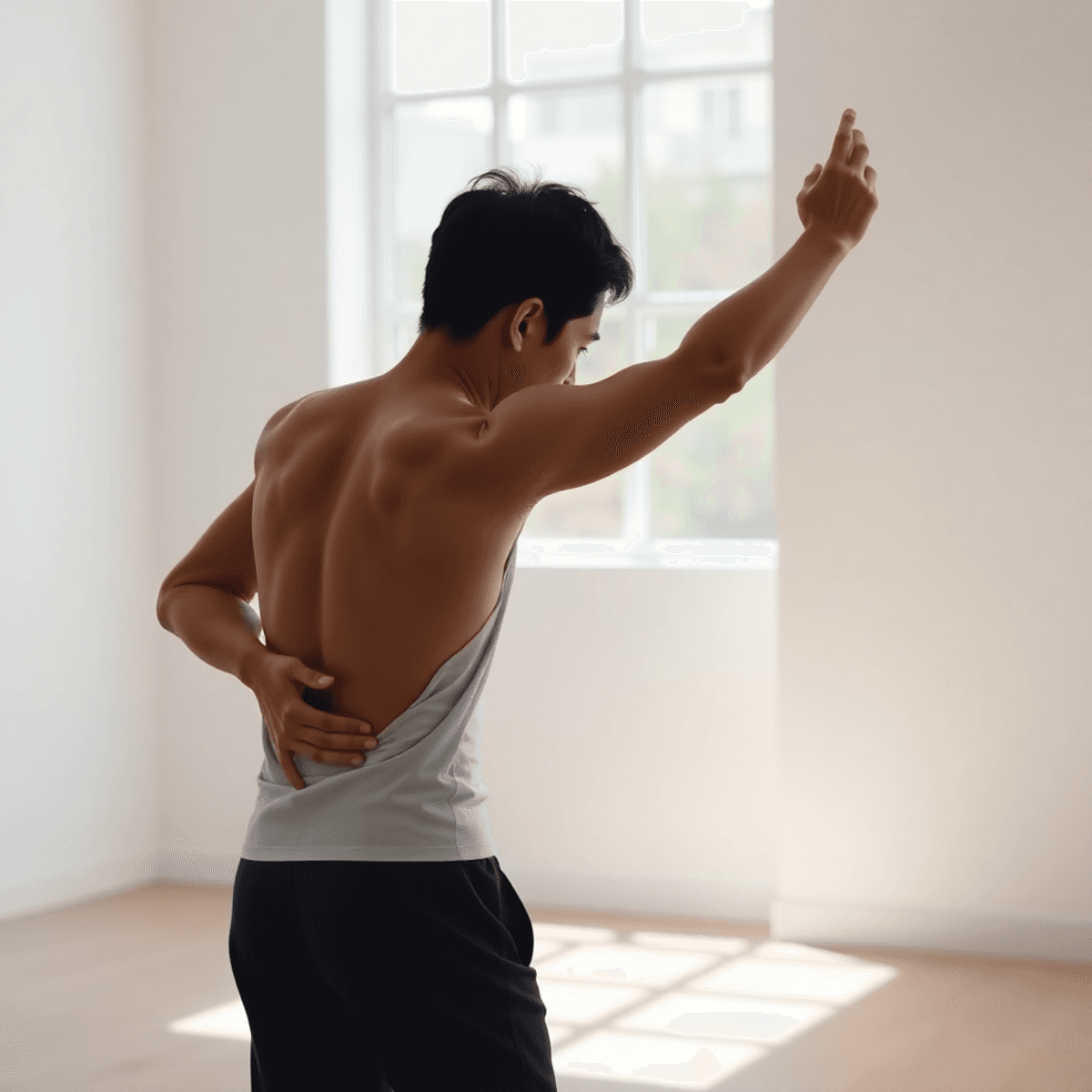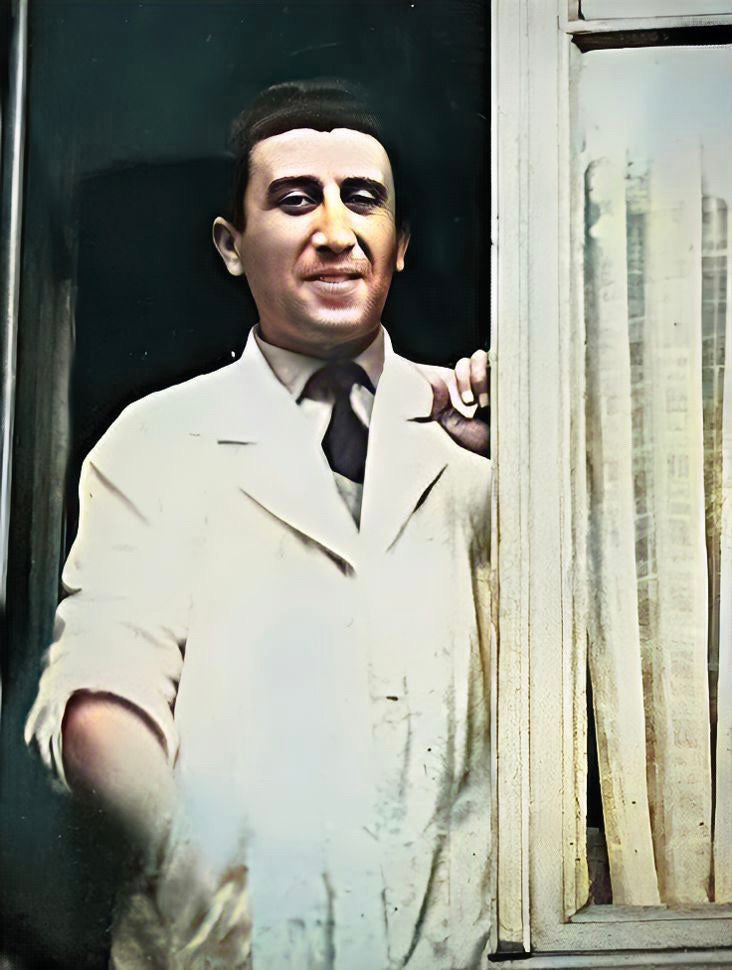Why Does My Lower Back Hurt Every Day?

Introduction
Lower back pain is a common problem that affects millions of people around the world, making it one of the leading causes of disability. You might be wondering, "Why does my lower back hurt every day?" This ongoing discomfort can greatly affect your quality of life and productivity.
Understanding the main reasons behind daily lower back pain is important for managing and treating it effectively. Figuring out whether your pain comes from simple strains or more complicated medical issues allows for personalised treatments that can ease your discomfort.
This article looks into different reasons for lower back pain, including common strains, structural problems, and medical conditions that may not be immediately obvious. It also discusses the unexpected connections between hip issues and back pain, as well as how osteoporosis and fractures contribute to chronic pain. The conversation goes further to include long-term conditions like fibromyalgia and rare but serious causes such as infections or tumours affecting the spine.
You'll discover how mental health can worsen physical symptoms and why getting the right diagnosis is crucial for effective treatment. The article wraps up with practical tips on when to see a doctor, identifying risk factors, exploring treatment options, and considering integrative approaches alongside traditional medical treatments.
Understanding Lower Back Pain
Lower back pain, often referred to as lumbar pain, is a common condition affecting the lower portion of the spine. It can range from a dull ache to a sharp, stabbing sensation that may hinder your ability to move or stand comfortably. This discomfort is not just an ailment but a signal pointing towards underlying issues that may need attention.
Common Symptoms Associated with Lower Back Pain
- Persistent Aching or Stiffness: A constant, dull ache often localised in the lower back.
- Sharp Pain: A sudden, intense pain that may be felt during movement or while at rest.
- Radiating Pain: Discomfort that extends from the back to other areas such as the hips, legs, or even feet.
- Limited Range of Motion: Difficulty in bending, twisting, or performing daily activities due to stiffness.
- Muscle Spasms: Uncontrolled muscle contractions can cause significant discomfort and restrict mobility.
How It Affects Daily Life
Living with persistent lower back pain can be quite challenging. It often impacts everyday activities like walking, sitting for extended periods, and even sleeping. Those suffering might find it difficult to engage in physical activities or maintain productivity at work. The constant discomfort can also contribute to mental stress, creating a cycle where anxiety exacerbates physical symptoms.
Understanding these symptoms and their effects on daily life is crucial in addressing the question: Why Does My Lower Back Hurt Every Day? Identifying the root causes paves the way for effective management and relief from this pervasive issue.
1. Strains and Sprains: The Usual Suspects Behind Your Daily Discomfort
Muscle strains and ligament sprains are common culprits when it comes to daily lower back discomfort. These injuries often occur due to incorrect movements or overexertion. When you lift heavy objects without proper technique or twist your body in an awkward manner, you risk overstretching or tearing the muscle fibres and ligaments in your lower back.
Daily activities that may lead to these issues include:
- Improper Lifting Techniques: Bending at the waist instead of the knees while lifting.
- Sudden Movements: Quick, jerky motions during activities such as sports or exercise.
- Prolonged Sitting: Sitting for extended periods without adequate support can lead to strain from poor posture.
- Overreaching: Stretching too far when trying to reach something high or distant.
Understanding these triggers can help you mitigate the risk of developing chronic pain associated with strains and sprains. Adjusting your movements and being mindful of posture during everyday tasks is essential in protecting your lower back.
2. Structural Issues: When Your Spine Needs Attention
Structural issues within the spine, such as osteoarthritis and scoliosis, can be significant contributors to chronic lower back pain.
Osteoarthritis
Osteoarthritis, a degenerative joint disease, results in the breakdown of cartilage between the vertebrae, leading to stiffness and discomfort. This condition often develops gradually with age and is exacerbated by factors like excess weight or previous injuries.
Scoliosis
Scoliosis, on the other hand, involves an abnormal curvature of the spine. While it may start in childhood or adolescence, its impact on lower back health can become more pronounced over time. The curvature places uneven pressure on spinal discs and joints, potentially leading to persistent pain.
Herniated Discs
Another common issue is herniated discs, where the soft centre of a spinal disc pushes through a crack in the tougher exterior casing. This can irritate nearby nerves, causing pain that radiates through the lower back and into the legs.
Understanding these structural problems is essential for determining why your lower back might hurt every day and identifying appropriate treatments or when to seek medical advice.
3. Medical Conditions: Beyond the Obvious Causes
Kidney infections often disguise themselves as lower back pain, leading many to mistake this serious condition for a simple muscle strain. This happens because the kidneys are located towards the back of your body, beneath the rib cage. When infected, they can cause significant discomfort in the lower back area.
Symptoms to Watch For:
- Fever and Chills: Unlike typical back pain, kidney infections are frequently accompanied by fevers and chills.
- Nausea and Vomiting: These symptoms are not usually linked to musculoskeletal issues.
- Painful Urination: A burning sensation or difficulty when urinating can indicate a urinary tract infection that has spread to the kidneys.
- Frequent Urination: An increased need to urinate, especially during the night.
- Blood in Urine: Visible blood or a change in urine colour requires immediate attention.
Recognising these signs is crucial for distinguishing between kidney-related issues and other causes of lower back pain. Early intervention can prevent complications and alleviate discomfort efficiently.
4. Hip Problems: The Surprising Link to Your Lower Back Pain
The connection between hip joint dysfunction and persistent lower back pain often goes unnoticed. Hip/knee problems affecting back pain can significantly contribute to discomfort in the lumbar region due to their close anatomical relationship. When the hip joint experiences dysfunction, it may alter the way you walk, stand, or move, leading to increased stress on the lower back.
Common Causes of Hip-Related Back Pain:
- Osteoarthritis: This degenerative condition can cause stiffness and pain in the hip joint, subsequently affecting the lower back.
- Bursitis: Inflammation of the bursae in the hip can lead to compensatory movements that strain your back.
- Hip Labral Tears: Damage to the cartilage surrounding the hip socket affects movement patterns, potentially leading to lumbar discomfort.
Addressing hip problems is crucial for alleviating related lower back pain. Treatment often involves physical therapy, exercises to improve joint function, and lifestyle modifications. Recognising this link can be pivotal in managing daily discomfort effectively.
5. Osteoporosis and Fractures: Fragile Bones, Stubborn Pain
Osteoporosis is a major cause of lower back pain, especially in older adults, with women at a higher risk. This condition makes bones weak and fragile, making them more likely to suffer from vertebral compression fractures. These fractures happen when weakened vertebrae collapse under the weight of the body and often go unnoticed at first because they are not very obvious.
Several factors increase the likelihood of experiencing back pain due to osteoporosis:
- Age: Bone density naturally decreases as we age.
- Gender: Women, especially those who have gone through menopause, are more susceptible because of lower estrogen levels.
- Lifestyle: Inactive lifestyle, smoking, and excessive drinking can weaken bones.
Fractures caused by osteoporosis can result in ongoing discomfort in the lower back area. Although these fractures may not show severe symptoms right away, they gradually lead to chronic pain and changes in posture. Understanding these underlying causes is essential in answering the question: Why Does My Lower Back Hurt Every Day? Finding and treating these fractures early on can prevent further problems and enhance overall well-being.
6. Chronic Conditions: Living with Ongoing Back Pain Issues
Inflammatory diseases such as rheumatoid arthritis and ankylosing spondylitis significantly impact the spine and pelvis, demanding ongoing management to alleviate persistent pain. These conditions often lead to inflammation and stiffness, particularly in the lower back, affecting mobility and daily activities.
Fibromyalgia is another condition that frequently exacerbates lower back symptoms. It is characterised by widespread musculoskeletal pain accompanied by fatigue, sleep, memory, and mood issues. This condition amplifies pain signals in the brain, leading to heightened sensitivity even in previously non-painful areas. Patients often report a constant dull ache in the lumbar region, adding another layer of discomfort to their daily lives.
Understanding these chronic conditions is crucial for managing lower back pain effectively. By recognising their symptoms and impacts, individuals can work towards developing more tailored treatment strategies that address both the physical and emotional challenges associated with these ongoing issues.
Rare Causes You Shouldn't Ignore
Lower back pain can sometimes indicate more serious health problems. While strains and chronic conditions are responsible for most cases, uncommon causes like spinal infections and tumours may result in ongoing discomfort that shouldn't be ignored.
Localised Infections
Certain bacterial or viral infections can invade the spine, causing inflammation and pain. Known as spinal infections, these might develop from a previous surgery, spread from another part of the body, or occur in individuals with weakened immune systems. Symptoms often resemble typical back pain, but additional signs like fever or fatigue should prompt immediate medical evaluation.
Tumours Affecting the Spine
Tumours—whether benign or malignant—can form within or near the spinal column. These growths may compress nerves or structures in the back, leading to persistent pain. It's crucial to consider a tumour-related cause when experiencing unexplained weight loss, night sweats, or neurological symptoms alongside back discomfort.
Identifying these rare causes is vital for timely diagnosis and effective treatment.
The Role of Mental Health in Your Daily Struggles with Back Pain
Understanding the connection between mental health and physical well-being is crucial when finding answers to "Why Does My Lower Back Hurt Every Day?" Psychological factors often make physical symptoms worse, making chronic lower back pain more intense and challenging to manage.
How Mental Health Issues Affect Back Pain
Here are some ways mental health issues can impact your experience with back pain:
- Stress and Anxiety: These common mental health issues can lead to muscle tension, worsening low back pain. Stress hormones such as cortisol are known to increase inflammation, potentially intensifying discomfort.
- Depression: Individuals suffering from depression may experience a heightened perception of pain. This condition can also reduce motivation for engaging in activities or exercises that might alleviate back pain.
- Pain-Depression-Stress Cycle: This cycle illustrates how chronic pain can lead to emotional distress, which in turn amplifies physical symptoms. Breaking this cycle is essential for managing persistent discomfort effectively.
A Holistic Approach to Managing Back Pain
Addressing mental health alongside physical treatments provides a comprehensive approach to tackling daily lower back pain struggles.
Getting an Accurate Diagnosis: Why It Matters More Than You Think
Understanding the underlying cause of your lower back pain is crucial for effective treatment. Healthcare professionals employ various diagnostic methods to pinpoint the issue accurately. Techniques such as X-rays and MRIs are commonly used. X-rays provide images of bones and can help identify fractures or degenerative changes in the spine. MRIs offer more detailed images, making them useful for detecting soft tissue problems like herniated discs or nerve compression.
Having a precise diagnosis allows for tailored treatment plans that address your specific needs. Whether it's physical therapy, medication, or surgical intervention, knowing the exact cause ensures that you receive the most appropriate care. Misdiagnosis can lead to ineffective treatments and prolonged discomfort, highlighting the importance of thorough evaluation by trained professionals. By gaining clarity on your condition, you can take informed steps towards finding relief and improving your quality of life.
When Should You Seek Medical Help? Signs Not to Ignore
Understanding when to see a doctor for back pain is crucial to prevent further complications. Certain symptoms associated with lower back discomfort indicate serious underlying issues that necessitate immediate medical attention:
- Fever: Persistent fever accompanying back pain may suggest an infection.
- Severe Pain: Intensity that disrupts daily activities or worsens over time.
- Leg Symptoms: Pain, numbness, tingling, or burning sensations radiating to the legs.
- Unexplained Weight Loss: Sudden weight reduction without dietary changes.
- Night Sweats and Appetite Loss: These could signal systemic conditions.
- Trouble Urinating or Bowel Issues: Difficulty in these areas requires urgent evaluation.
Ignoring these symptoms can lead to delayed diagnosis of conditions like infections, spinal cord compression, or malignancies. Seeking timely medical advice ensures effective management and prevents escalation into more complex health issues.
Risk Factors That Raise Red Flags: Are You at Higher Risk?
Certain risk factors can significantly increase the likelihood of experiencing lower back pain, making it crucial to identify them early. Recognising these factors can guide you in seeking timely medical intervention.
1. Personal History of Cancer
If you have a history of cancer, unexplained lower back pain could be an early sign of metastasis or tumour growth. This situation demands immediate attention from a healthcare provider for proper assessment and management.
2. Recent Infection
An infection, particularly one that has recently occurred, may lead to inflammation and discomfort in the lower back. Conditions such as kidney infections can mimic muscular pain, often requiring urgent care to prevent further complications.
Understanding these risk factors is essential in addressing your daily discomfort effectively. By recognising warning signs early on, you can engage with healthcare professionals to explore potential causes behind the question, "Why Does My Lower Back Hurt Every Day? Causes, Treatments & When to See a Doctor."
Finding Relief: Navigating Treatment Options for Your Daily Discomfort
Exploring effective ways to manage lower back pain involves incorporating specific exercises and lifestyle changes into your daily routine. These strategies aim to alleviate discomfort and enhance overall well-being.
Exercises for Lower Back Pain
Engaging in targeted exercises can strengthen muscles, improve flexibility, and reduce the strain on your lower back. Consider integrating the following activities:
- Stretching routines: Focus on gentle stretches that target the lumbar region, such as knee-to-chest stretches or pelvic tilts.
- Core strengthening: Exercises like planks or bridges can help stabilise the spine by building core strength.
- Low-impact aerobic activities: Swimming or walking can enhance cardiovascular fitness without placing undue stress on the back.
Lifestyle Adjustments
In addition to physical activity, certain lifestyle modifications can significantly impact pain management:
- Weight management: Maintaining a healthy weight reduces pressure on the spine.
- Ergonomic adjustments: Optimising your workstation setup helps prevent incorrect postures that contribute to pain.
- Stress reduction techniques: Practices like yoga or meditation may alleviate stress-related tension in the back.
Implementing these strategies requires consistency and patience but offers substantial benefits for those seeking relief from persistent lower back pain.
Integrative Approaches Worth Exploring
Exploring integrative approaches can be a valuable addition to managing chronic lower back pain. These methods often complement traditional medical interventions, providing a holistic treatment plan. GoodPath is an example of an integrative personalised treatment that combines various elements to address your discomfort comprehensively.
Consider incorporating the following into your routine:
- Supplements: Certain supplements like omega-3 fatty acids, turmeric, and magnesium are known for their anti-inflammatory properties, potentially easing back pain.
- Mind-body Techniques: Practices such as yoga, meditation, and tai chi not only help in reducing stress but also improve flexibility and strength, which can alleviate lower back discomfort.
These strategies aim to address both physical symptoms and psychological factors contributing to pain, providing a more rounded approach to relief. Engaging in these treatments might also lead to better long-term outcomes when combined with professional medical advice.
Traditional Medical Interventions: What Works?
When it comes to treating lower back pain, medications are usually the first option. They can be classified into two main types: over-the-counter (OTC) and prescription medications.
1. Over-the-Counter Medications
These include nonsteroidal anti-inflammatory drugs (NSAIDs) like ibuprofen and aspirin. Such medications are readily available and can provide temporary relief from acute episodes by reducing inflammation and pain. However, they may not address the long-term causes of discomfort.
2. Prescription Medications
For more severe cases, healthcare providers might prescribe stronger solutions such as muscle relaxants or opioids. While these may offer significant relief, they come with the risk of side effects and dependency issues, making them a less sustainable option for chronic pain management.
Both types of medication play a critical role in managing acute symptoms, yet they shouldn't replace a comprehensive evaluation to understand Why Does My Lower Back Hurt Every Day? Causes, Treatments & When to See a Doctor."
Living Life Fully Despite Your Back Pain: Practical Tips for Daily Activities
Living with chronic lower back pain doesn't mean you have to miss out on life's pleasures. Here are some practical strategies to help you manage daily activities comfortably:
1. Prioritise Ergonomics
Ensure your workspace is back-friendly. Use chairs with proper lumbar support and adjust your computer screen to eye level.
2. Pace Yourself
Break tasks into smaller, manageable chunks. Take regular breaks to stretch and move around, reducing strain on your back.
3. Stay Active
Engage in low-impact exercises such as walking or swimming. These activities can strengthen muscles and improve flexibility.
4. Mind Your Posture
Maintain a neutral spine position while standing or sitting. Avoid slouching by using supportive cushions if necessary.
5. Adapt Household Chores
Use long-handled tools for cleaning tasks to avoid bending or twisting awkwardly.
Seeking advice on managing daily activities with back pain is crucial. Understanding Why Does My Lower Back Hurt Every Day? empowers you to take control, explore treatments, and know when it's time to see a doctor.
FAQs
What are the common causes of lower back pain?
Common causes of lower back pain include muscle strains, ligament sprains, structural issues such as osteoarthritis and scoliosis, herniated discs, and medical conditions like kidney infections. Additionally, hip problems and osteoporosis can also contribute to persistent lower back pain.
How can lower back pain affect daily life?
Living with persistent lower back pain can be quite challenging. It may hinder your ability to perform everyday activities, affect your work productivity, and diminish your overall quality of life due to discomfort and limitations in mobility.
When should I seek medical help for my lower back pain?
You should seek medical help if you experience unexplained lower back pain, especially if you have a personal history of cancer, recent infections, or if the pain is accompanied by other concerning symptoms like numbness or weakness in the legs.
What lifestyle adjustments can help manage lower back pain?
Lifestyle adjustments that can help manage lower back pain include prioritising ergonomics in your workspace, pacing yourself during tasks, staying active with low-impact exercises like walking or swimming, maintaining good posture, and adapting household chores to reduce strain.
How does mental health impact lower back pain?
Mental health issues can significantly impact your experience of back pain. Stress and anxiety may exacerbate physical discomfort, while addressing mental health alongside physical treatments can lead to a more holistic approach to managing chronic pain.
What are some effective treatment options for lower back pain?
Effective treatment options for lower back pain include over-the-counter medications like NSAIDs for inflammation relief, prescription medications for more severe cases, engaging in targeted exercises to strengthen muscles, and exploring integrative approaches such as physical therapy or acupuncture.












